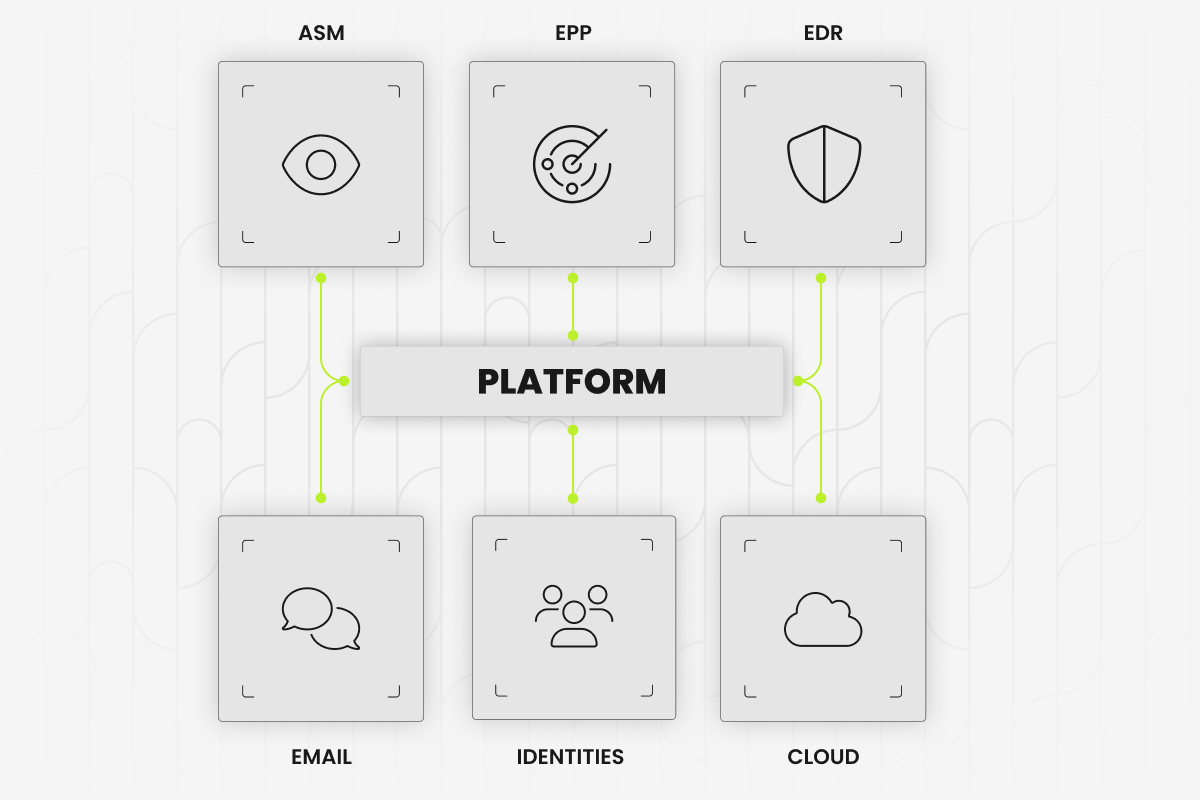📑
Reconciling priorities around cybersecurity
As highlighted in the Gartner study “A Security View of the CIO and CEO Agenda for 2026,” budget priorities differ between CEOs, CIOs, and CISOs (but as we will see, their paths will cross and even converge).
- CEOs are focused on growth, particularly through AI, and they know that cybersecurity is essential to success.
In terms of budget: 83% of CEOs said they plan to increase their investment in digital technologies, and 75% said they would increase their overall IT spending. - CIOs define and implement IT strategies, support technological developments, and identify emerging technologies relevant to the company’s growth. The study further reports that cybersecurity is a priority for CIOs – for the first time since Gartner began conducting this study.
In terms of budget: 87% of CIOs plan to increase their cybersecurity budget by 22.5%, 74% will increase their budget by 31% to modernize their applications, and 84% plan to increase their AI budget by around 28%.
While growth objectives do not always align with technical constraints and priorities, cybersecurity is a common challenge for all stakeholders!

In this context, the role of CISOs is to be as attentive to the business and technological ambitions of their organization as they are to future changes in operational models.
But they also face a major challenge: the proliferation of tools. In another study “From overload to optimization: Gartner’s approach to rationalizing cybersecurity tools, nearly 100, including endpoint, data, network, identity security, SecOps tools, and more. This means that even with the same budget, there are more and more options available.
The solution lies in a holistic, platform-oriented approach to securing the workspace.
The platform approach to securing the workspace
CEOs, CIOs, and CISOs must align their priorities around cybersecurity to:
- Ensure service continuity
- Avoid financial losses
- Maintain customer and user trust
But as we have seen, the proliferation of tools makes the market and choices complex for CISOs who, according to the Gartner study, have deployed an average of 43 cybersecurity tools. This arsenal obviously needs to be configured, monitored, and maintained, which demands time and resources.
This proliferation not only leads to a dispersion of human and budgetary resources, but also presents operational risks such as incompatibilities between tools or data formats. In addition, it is difficult not to succumb to “alert fatigue” given the number of solutions blasting notifications left and right.
Finally, this proliferation of solutions also goes hand in hand with a proliferation of agents, which makes deployment and maintenance tedious and degrades endpoint performance.
Despite all this, CISOs are tasked with dealing with attacks that are increasing in number and sophistication, and to do so they need greater protection and visibility. This is where the platform approach comes into its own, as it enables them to:
- Meet protection needs ranging from prevention to action (ASM, EPP, EDR, email, identity, and cloud security, and more)
- Centralize solutions to optimize deployment, management, and maintenance
- Accelerate investigations and incident response with unified data that can be easily correlated

In short, by leveraging a platform, organizations can simplify workplace security, improve their security posture,
and optimize their budgets while staying in tune with the threat landscape. This is a unified response to the objectives that CISOs, CEOs, and CIOs share. They of course must still keep the door open to best-of-breed solutions wherever necessary.
As seen earlier, despite investments in technology and cybersecurity being set to increase, the market is experiencing a talent shortage, and organizations do not always have the budget to recruit nor the resources or expertise to operate these solutions.
Beyond the platform approach, artificial intelligence is part of the solution – not to replace expertise, but to augment human capabilities.
AI serves CISOs but also poses new cybersecurity challenges
A Forrester study reveals that only 15% of the organizations surveyed are getting what they want from AI, mainly due to a lack of quality data.
Artificial intelligence can augment human capabilities, but it does not do the job alone! Humans remain central to configuring and operating tools, even AI-based ones, since data will not transform itself into results.
In cybersecurity, AI-enabled automation, detection of unknown threats, and natural language assistance are assets for analysts – provided that the data is of high quality.
These features correspond to specific use cases, and their design must be the result of collaboration between cybersecurity and AI experts to ensure that the products are effective and meet CISOs’ needs.
However, while AI aims to facilitate the work of cyber experts, it can also create more work for CISOs due to the new security challenges it poses.
As ANSSI (the French National Cybersecurity Agency) notes in its guide “Building trust in AI through a cyber risk approach,” artificial intelligence can present the following risks for an organization: data poisoning, extraction, or evasion; compromise of infrastructure hosting an AI system or supply chain; human and organizational shortcomings in detecting malfunctions; lateralization via an AI system; MCP (Model Context Protocol) servers that may contain backdoors; among others.
In addition, ANSSI offers recommendations to mitigate these cyber risks such as integration and development that comply with regulations and best practices, mapping of the supply chain and AI systems and their interconnections, continuous monitoring with the help of detection tools that can identify suspicious behavior, and via the promotion of cyber hygiene rules to the information system users.
AI is simultaneously a vector for business development, for protection capabilities, and for cyber risks. No matter which way you look at it, AI is increasingly present in the daily lives of CISOs, and mastery of the subject and its many facets is becoming mission-critical.
Cybersecurity: where the paths of CISOs, CEOs, and CIOs converge
As mentioned in the introduction, cybersecurity stands a crossroads where the roadmaps of CISOs, CEOs, and CIOs meet. CISOs have a decisive leadership role to play in this agenda.
CISOs are key to streamlining tools through the adoption of platforms and supporting the technological revolution driven by AI. Their mission is both to deploy AI tools designed to increase protection capabilities and to ensure their secure use.
In conclusion, CISOs ability to prioritize solutions that tick all the boxes for all stakeholders will make all the difference:
- optimal detection and remediation capabilities to address threats, particularly the cyber challenges posed by AI, while leveraging AI to enhance these protection capabilities
- a platform-oriented approach to secure the workspace, and to streamline financial, human, and endpoint resources.
2026 is shaping up to be a busy year. To put it lightly.
Discover our platform and its solutions
for deploying your cyber roadmap:





